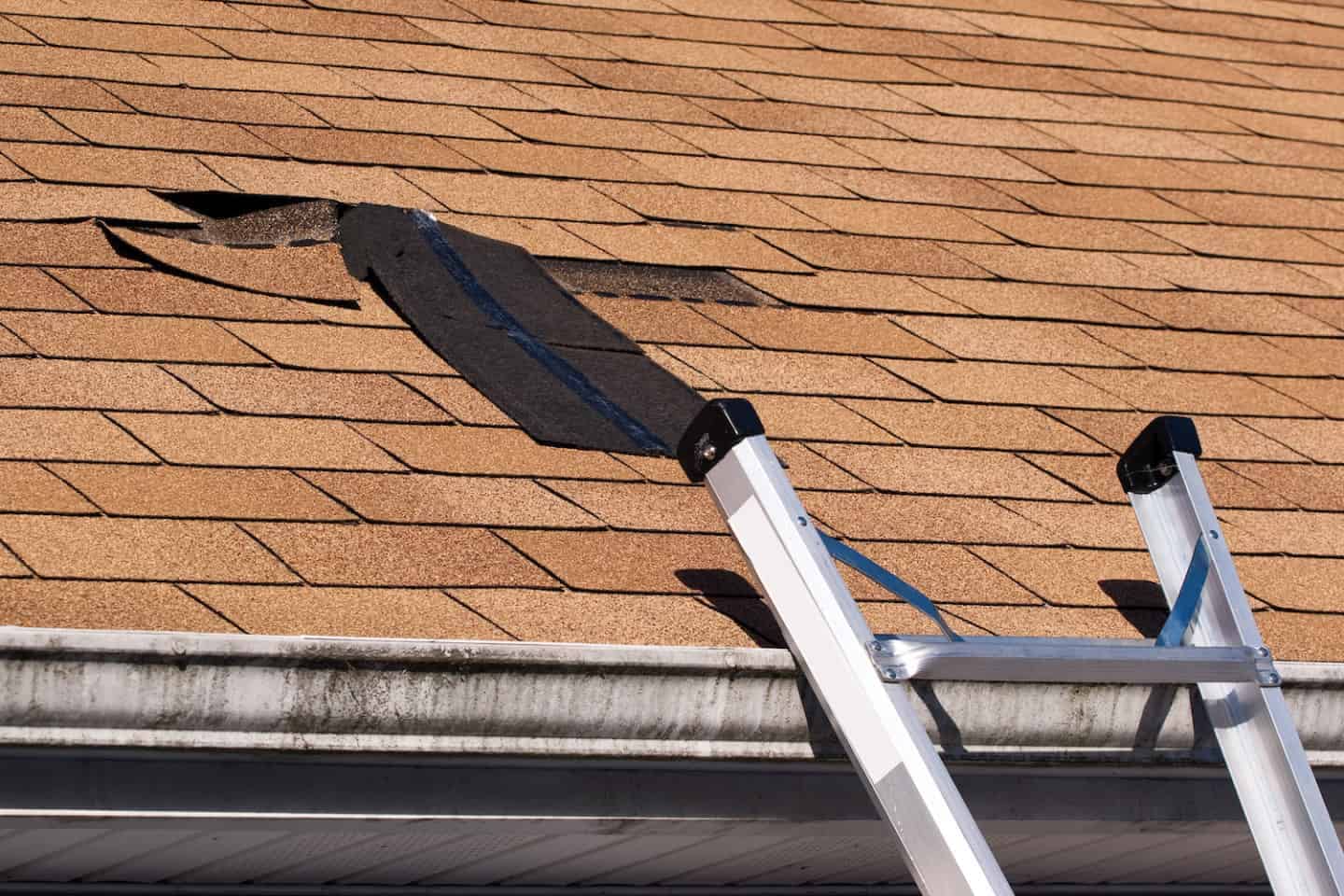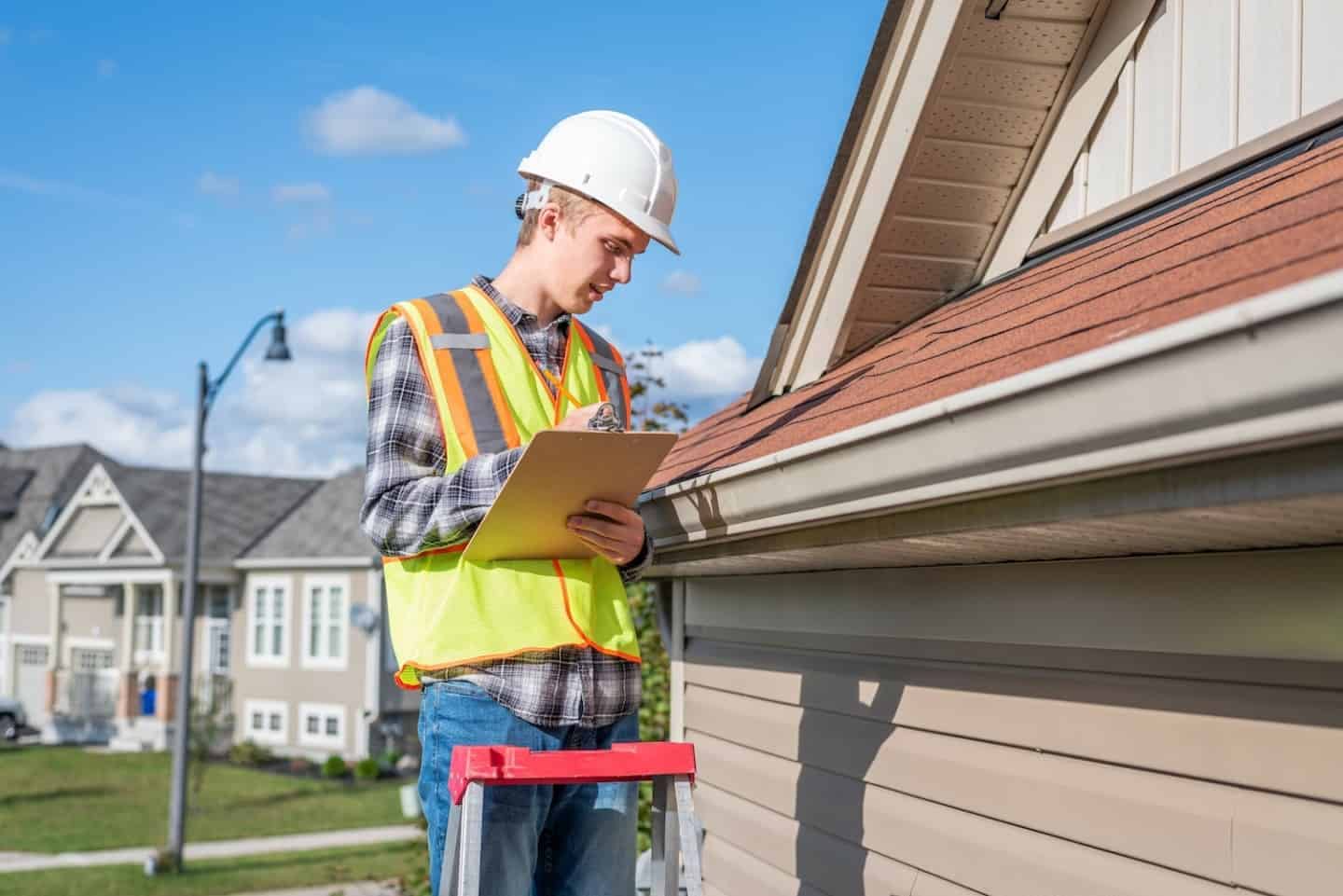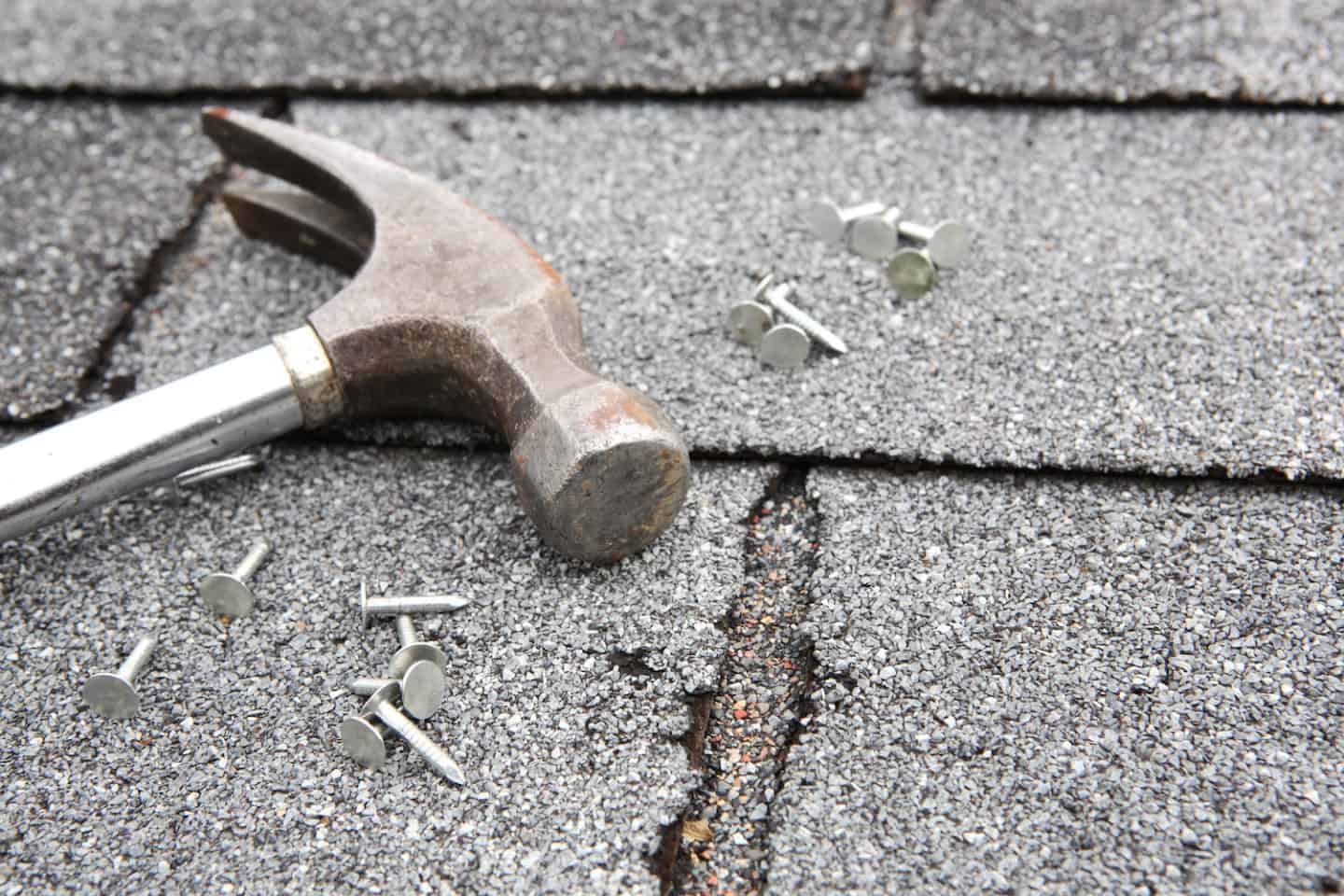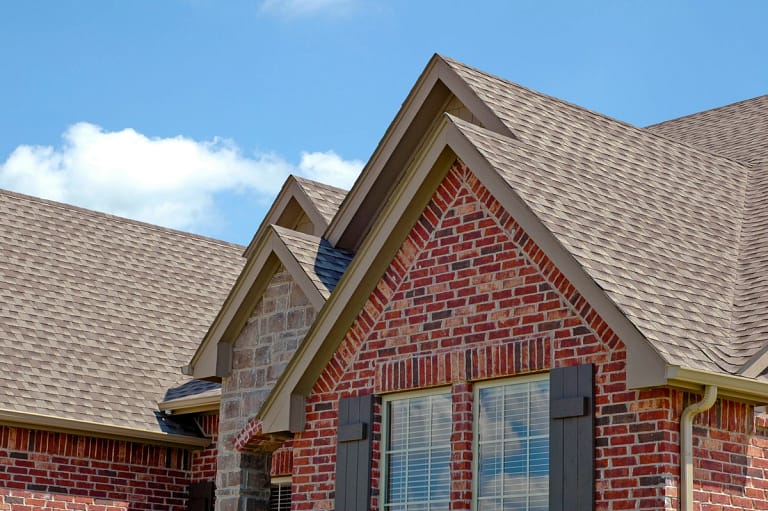Dealing with repairs around the house after a storm hits your home is never fun for homeowners. But a little bit of regular maintenance beforehand can help protect your home and prevent storm damage the next time hail or high winds roll through.
Want to make sure all parts of your home are protected from storm damage? Read this in-depth guide to learn more about the five vital steps to homeowner’s storm prep so you can also prevent storm damage to your home. ⚡️🏡
Step One: Assess Your Home Before Storm Season
Even before a storm hits, you want to have your home ready for the unexpected. That’s what makes this initial assessment so important.
This is where you can look for any weak points around your home to fortify in order to better protect your home in the future. It’s also a perfect opportunity to get a better idea of what kind of basic upkeep and maintenance you need to prioritize prior to storm season.
Step Two: Perform Basic Upkeep
Taking care of your home’s exterior is an essential responsibility of a homeowner. Performing regular maintenance before storm season brings its first bad storm is the best way to protect your home.
Take time to focus on each aspect of your home’s exterior individually.

Replace Missing or Broken Shingles
After you’ve performed a visual inspection of your home’s roof, you can identify any areas that need attention, such as locations on the surface where shingles are loose or missing entirely.
Cracked, curled, or loose shingles are more likely to break free, meaning you now have a missing shingle, which leaves space to let water and wind inside. This can cause even more damage to your home down the line, so it’s important to stay on top of replacing shingles when you see any damaged ones.
🤔 Remember: Always install shingle nails below the nail line to ensure that they feel extra secure and won’t be ripped off when heavy winds happen.
Clean Your Gutters
It’s generally a good idea to clean out your gutters at least twice a year, but they might need more care if you live in a wet climate. You want free flowing rainwater to be able to move away from your home and roof easily in order to prevent basement flooding, so this is not something to skip on your to-do list.
To get water flowing through your gutters again, clear out:
- Dirt
- Debris
- Asphalt shingle granules
- Leaves
- Mud
- Moss
- Vines
Repair Loose Siding
Another area of your home that you’ll want to keep an eye on and maintain annually is the siding. If you see any loose siding panels, ensure they’re repaired before the wind rips them off and makes matters worse.
You should also act fast when you spot cracks in your siding to avoid any damage from pests or water seeping in.
Check Windows and Doorways
You should also be inspecting your doors and windows annually to ensure proper sealing around these areas. If window and door seals aren’t properly maintained, you’re probably experiencing lower home efficiency as we speak.

Step Three: Install Storm Shutters (and Other Prep Before Bad Weather)
With the general maintenance out of the way, you can start focusing on the real preventative measures for keeping storm damage at bay.
Trim Trees & Install Wind Breaks
One smart way to prevent storm damage from wind is to plant trees or tall shrubs around your home in a line to act as windbreaks. However, it’s important to plant trees far enough away from your home to avoid any tree limbs falling on your house and hurting someone.
👍 A good rule of thumb is about 15 to 20 feet away from your roof for tall trees and 10 to 15 feet for shorter shrubs like Arborvitae shrubs.
Batten Down the Hatches
Many times during storms, windows wind up getting ripped off their hinges and blown across your neighbor’s yard, causing further property damage. If high winds are common where you live, consider installing impact-resistant shutters or storm shutters to keep your home’s interior (and your neighbor’s property) safe.
Flower pots, lawn furniture, and loose fence posts wind up blowing away as well with enough wind, so you’ll want to secure furniture and finish up any other outstanding repairs, which includes fence posts, in order to protect people from potentially dangerous blowing debris.
Double-Check Drainage
Clearing your gutters twice a year is wise, but one other area you want to ensure is in good working order as well before storm season hits is your sump pump. If your home has a sump pump, invest in a backup sump pump and ensure your sump pump has the proper retention area to handle heavy rainfall and prevent flooding during a storm.
Step Up Sealant & Insulation
If you found faulty seals on doors and windows during your annual upkeep inspection, now’s a good time to ensure proper sealing is in place to keep moisture from storms out.

Step Four: Complete a Thorough Inspection After a Severe Storm 🔎
Although you want to inspect your home throughout the year just in case any general wear and tear is taking a toll, it’s also vital to perform a visual inspection immediately after a storm hits. Here’s how to do it:
- From the ground – If you see any obvious property damage like downed power lines and fallen trees or other yard debris, you know you’ll likely need emergency storm damage repairs.
- In your gutters – Use a ladder to look in your gutters. If there is an excessive amount of asphalt granules that have sloughed off your shingles, it’s time to schedule storm repairs.
- Inside your attic – This is another area of your home where you can spot obvious storm damage. If sunbeams shine through holes during the day or rain seeps into cracks, you should seek an immediate consultation for a roof replacement.
- From the roof’s surface – If you have the proper safety equipment to climb on your roof’s surface, you can really get a good look at the extent of any storm damage and make a plan of action to address it.
Step Five: Repair or Replace Your Roof as Needed ⚒️
Sometimes, there’s no way to avoid storm damage when strong winds or a bad storm bring down their wrath. In some instances, you might only have to straighten up your outdoor furniture and collect yard debris. Other times, extreme weather causes storm damage that requires repairs or full replacement.
In those cases, it’s crucial to keep up with the necessary repairs in order to protect your home. That’s why it’s important to know the common signs of storm damage to your home, such as:
- Physical damage to your home from debris (i.e., fallen tree limbs, hail, etc.)
- Sagging or rotting roofing materials
- Cracked, curling, or missing shingles
- Moss and algae growth
- Shingle discoloration
- Excessive granule buildup in gutters
- Poor drainage and lingering moisture
- Water damage to your home interior
- Higher monthly energy bills
If you spot any of these issues after heavy rains or wind impact your home, it’s time to take action. If you let even minor types of damage linger, you might wind up dealing with even more expensive issues down the line.
Following the steps from this guide can help protect your home and prevent those pricy repairs that you’ve been putting off.
Prevent Storm Damage With Help From the Pros 👷
Whether you want to get your home ready for the upcoming storm season or you’re looking for help with repairs after a major storm makes its way through town, we’re here for you.
The expert team at Best Exteriors can help prepare your home in order to prevent storm damage, as well as provide repairs when severe weather takes its toll. Our roofing and exterior contracting professionals have all the tools and knowledge needed to protect your home’s roof, siding, windows, and more.
Contact us today to start preparing your house for when summer storms or spring rains start.




